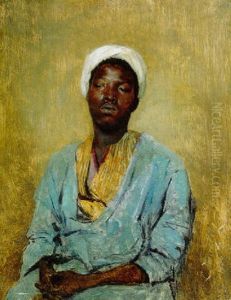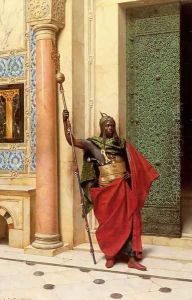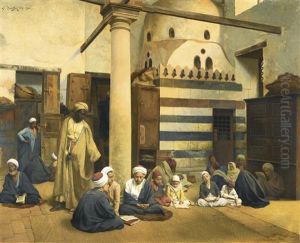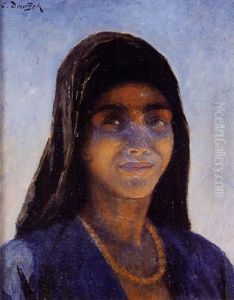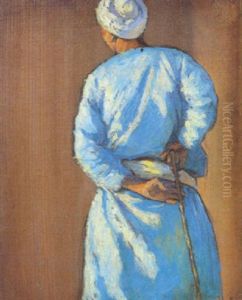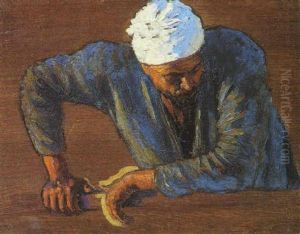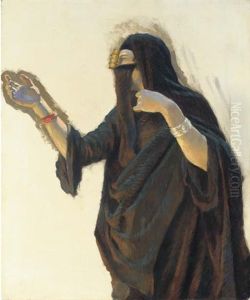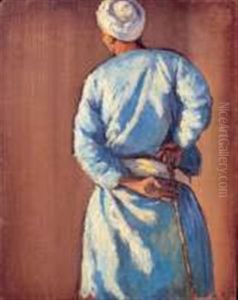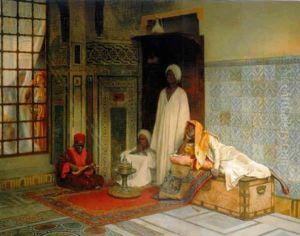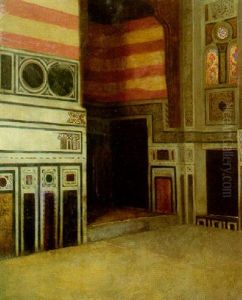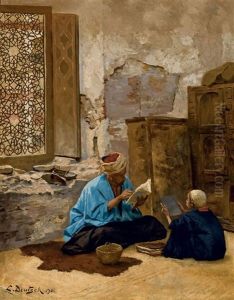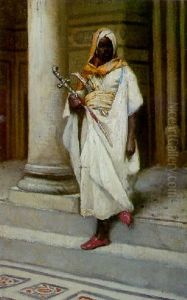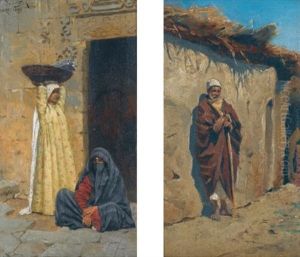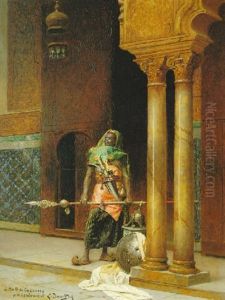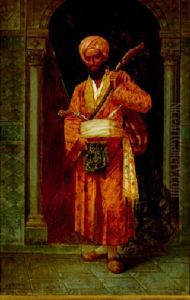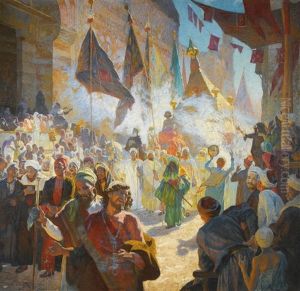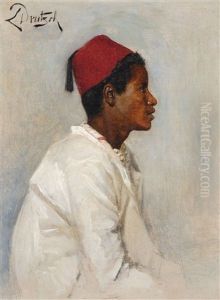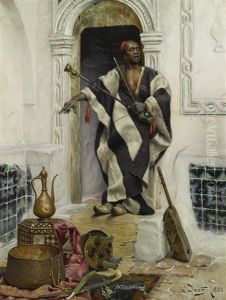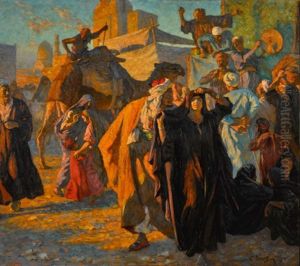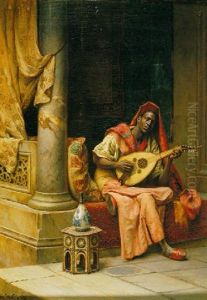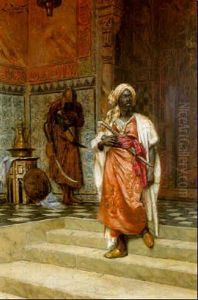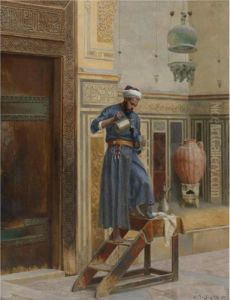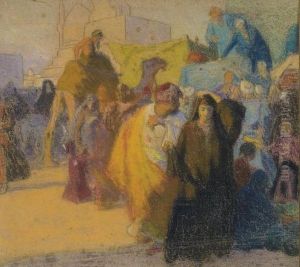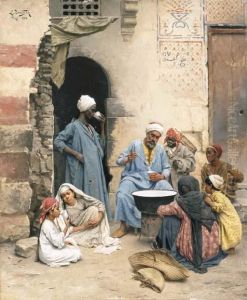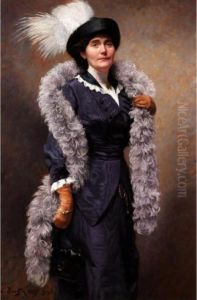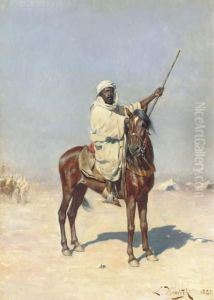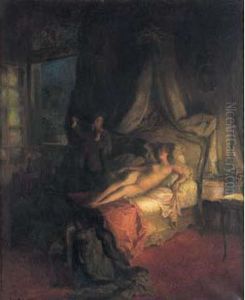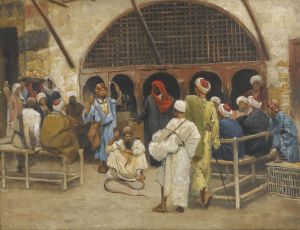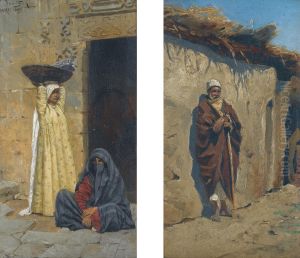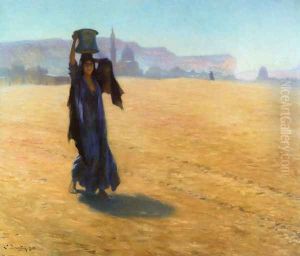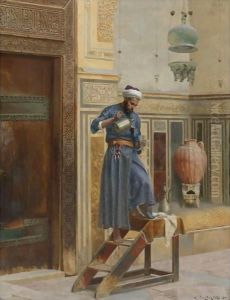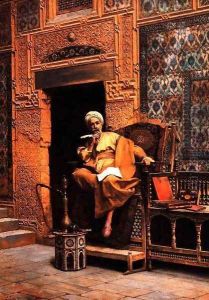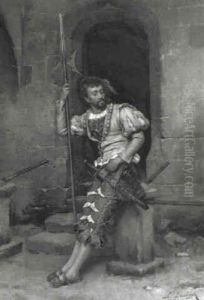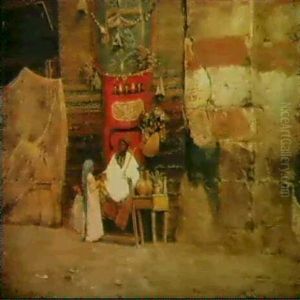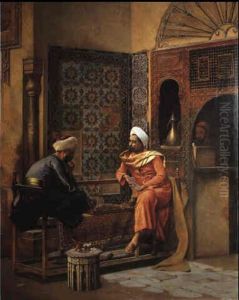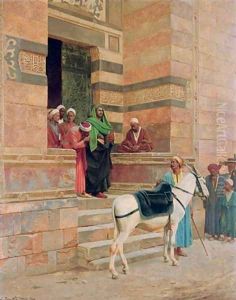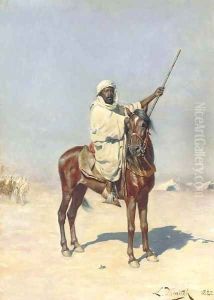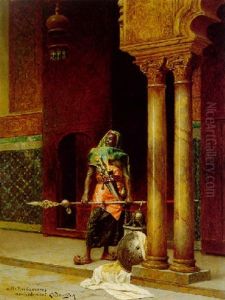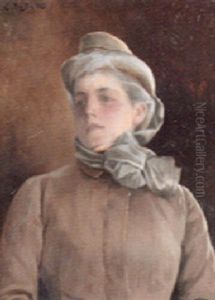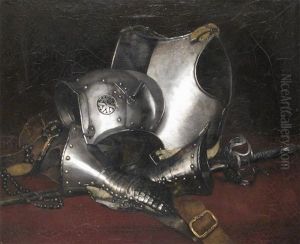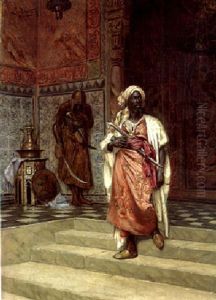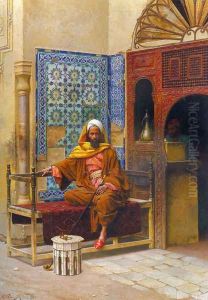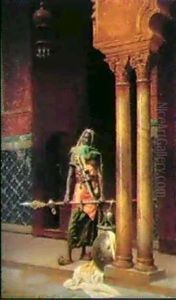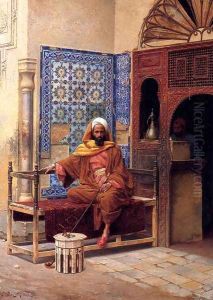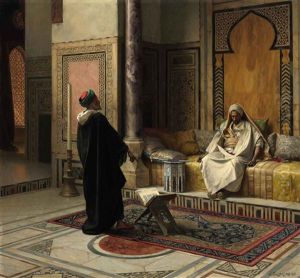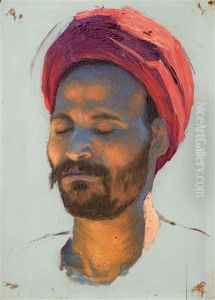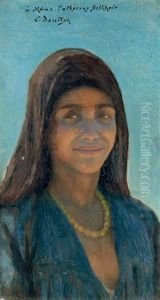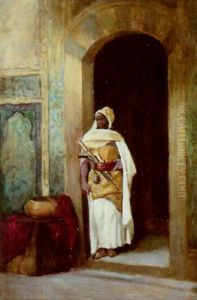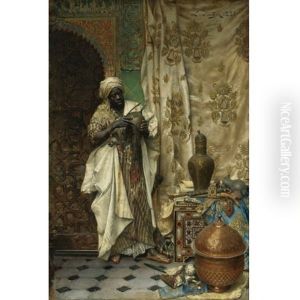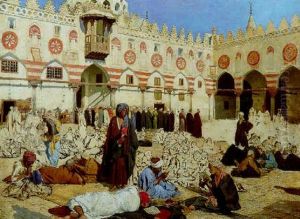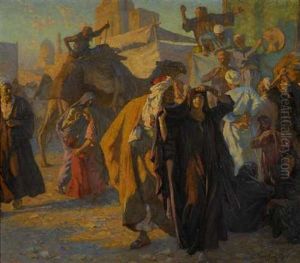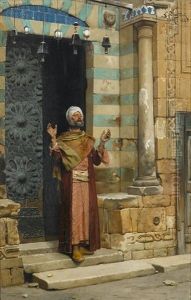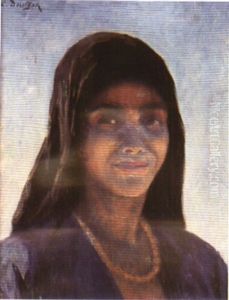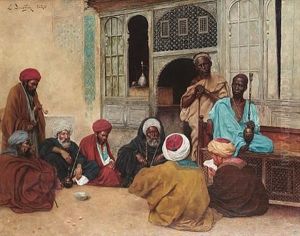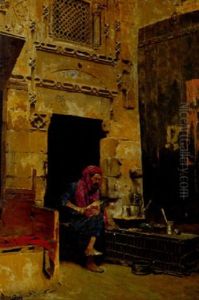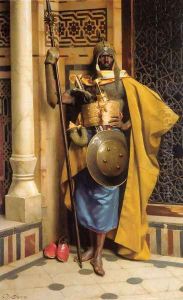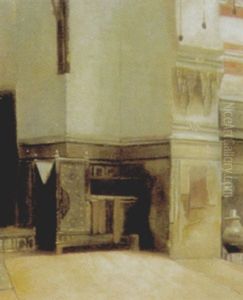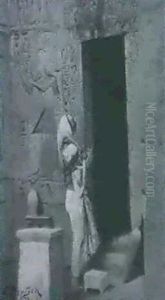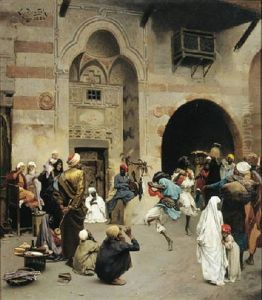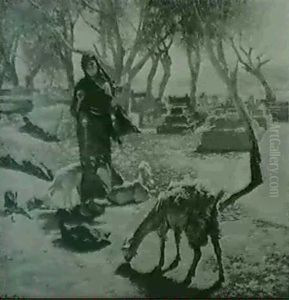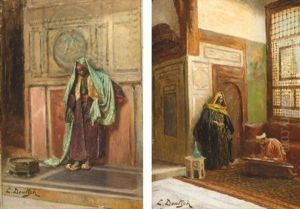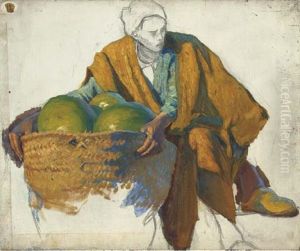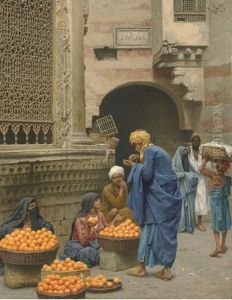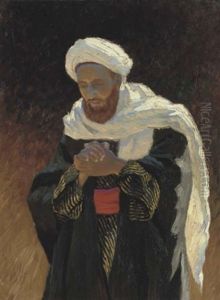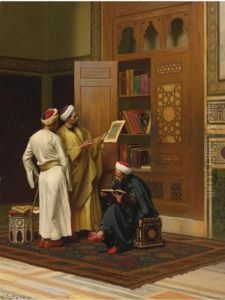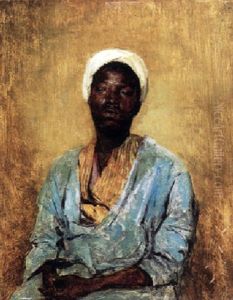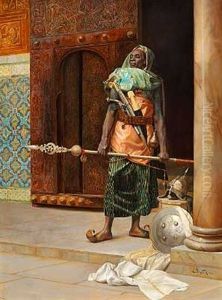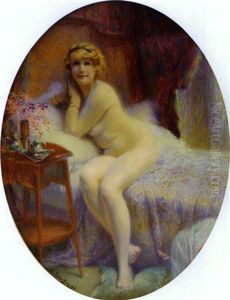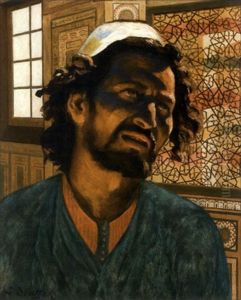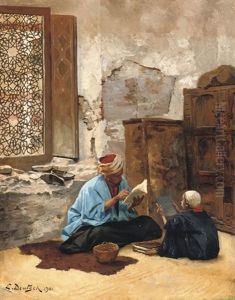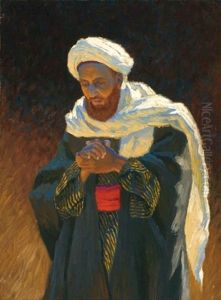Ludwig Deutsch Paintings
Ludwig Deutsch was an Austrian painter who is best known for his detailed depictions of life in the Middle East. Born on August 13, 1855, in Vienna, Austria, he was a key figure among the Orientalist painters, a group of European artists fascinated by the cultures and landscapes of North Africa and the Ottoman Empire.
Deutsch received his initial artistic training at the Viennese Academy of Fine Arts, where he studied under renowned history painter Anselm Feuerbach. After his education, Deutsch relocated to Paris, which was the hub of the art world in the late 19th century. In Paris, he became associated with other Orientalist artists and was influenced by the works of Jean-Léon Gérôme, one of the leading Orientalist painters of the time.
In the early 1880s, Deutsch embarked on his first trip to Egypt, a journey that would have a profound impact on his artistic direction. Captivated by the vibrant street life, the architecture, and the customs of the Egyptian people, he began producing works that were meticulously detailed and rich in color, often portraying scenes of daily life, religious figures, and marketplaces.
Deutsch's paintings are characterized by their precision and attention to detail, particularly in the depiction of textiles and patterns. He often spent considerable amounts of time on research, ensuring that his representations were accurate and authentic. This dedication to realism and ethnographic accuracy helped to set his work apart from some of his contemporaries, who sometimes veered into the realm of fantasy in their Orientalist works.
Throughout his career, Ludwig Deutsch remained a prominent figure in the Parisian art scene. He exhibited regularly at the Salon, the official art exhibition of the Académie des Beaux-Arts in Paris, and received numerous awards for his work. His paintings were highly sought after by collectors during his lifetime and continue to be well-regarded for their quality and historical value.
Ludwig Deutsch continued to paint until his later years, and he passed away on April 9, 1935, in Paris. His legacy is that of a masterful painter who provided a window into the life and culture of the Middle East during a time when such depictions were both rare and highly romanticized by the Western world.
